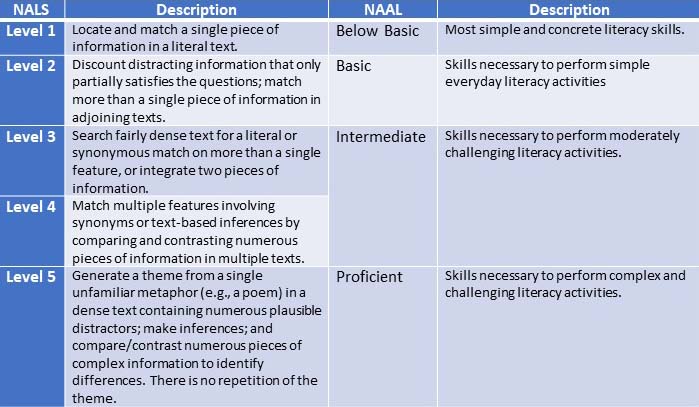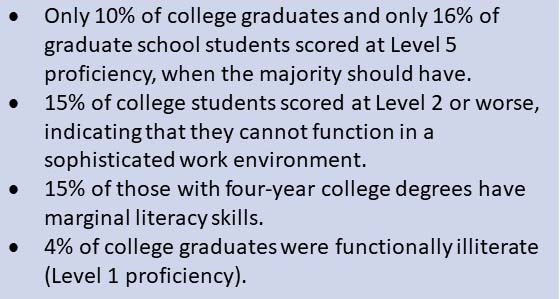
When I saw this cartoon, my passion for improving reading comprehension skills kicked in. When we read, we recognize an arrangement of symbols as words; when we comprehend, we create meaning from those recognized words. There’s a big difference between these two skills. Have you ever heard someone say, “It doesn’t matter how many times I read it; I just don’t get it”? That’s clear evidence of a lack of reading comprehension skills.
There are many studies of children’s academic skills through twelfth grade. The most well-known of these is the NAEP (National Assessment of Educational Progress), the largest nationally representative and continuing assessment of what America’s students know and can do in various subject areas. The NAEP began in 1969 and is published every four years. It assesses students’ academic skills in 4th, 8th and 12th grade. Among developed countries in the world, the United States spends, by far, the most money on education overall and the second-most per student: $810 billion overall and about $12,800 per student in public education. In spite of that, the U.S. 2019 NAEP scores in reading, math, and science are disappointing.

Given those results, is it any wonder adults have reading comprehension difficulties? There are very few studies of the academic competencies of adults. The biggest reason for this is that children can be tracked and followed fairly easily through the school system for a number of years. Adults, on the other hand, relocate and change jobs, making them harder to find for follow-up studies.
The first national comprehensive study of adult literacy was the 1992 National Adult Literacy Survey (NALS). The 2003 National Assessment of Adult Literacy (NAAL) was the first time a follow-up adult literacy study was done. The results were not good for either study. In fact, the results of the follow-up NAAL showed a decline in adult literacy when compared to the earlier NALS. Both surveys indicated that the “golden age” of literacy in the United States is made up of the group of adults who learned to read between 1955 and 1965. And yet, only thirty percent of that group scored at a proficient literacy level.
The chart below describes the assessed literacy levels from each study. The NAAL combined Levels 3 and 4 of the NALS to describe intermediate level readers. I was honored to be selected as a member of the group of educators invited to Washington, D.C. to work with the U.S. Department of Education prior to administering the NAAL. Our group set cut-points for the described literacy skills on the NAAL. It was an exciting experience to work on this project. You might find it interesting to see how literate you are. Read the descriptors below and decide.

Now the bad news–and the reason the above cartoon is too true. These are 1992 NALS results. The 2003 NAAL results were worse.

As if half the adult population being barely literate isn’t bad enough, I found the following results to be even more surprising. Again, these are 1992 NALS results.

What does this mean for you? It means that if you could make sense of this blog post (and the national study odds are 52 to 48 that you couldn’t), don’t assume that the people you’re interacting with are equally skilled in literacy. Far too many of them are not.
Author’s note: It is possible to improve reading comprehension. Two of the biggest misconceptions regarding good readers are that good readers read quickly and that they instantly comprehend what they read. In fact, good readers read for meaning, not for speed, and they re-read texts to improve their understanding of the content. If you need to improve your reading comprehension, here are seven simple strategies you can use to work on your comprehension skills.
- Improve your vocabulary.
- Come up with questions about the text you are reading.
- Use context clues.
- Look for the main idea.
- Write a summary of what you read.
- Break up the reading into smaller sections.
- Pace yourself.